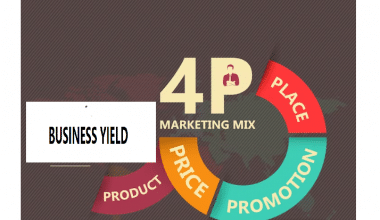Printing advertising is a form of marketing that uses print media like brochures, billboards, flyers, and posters. Despite the current adaptation of digital marketing strategies, printing advertising still remains effective. It offers a tangible and impactful way to reach your target audience and has multiple benefits, such as being able to capture emotions and evoke emotions. In this article, we will explore the definition of printing advertising, the benefits it holds over digital marketing, and also its types.
Printing Advertising
Print advertising is a form of marketing that uses physically printed media, such as newspapers, magazines, brochures, and direct mail, to reach a broad audience and convey a sponsored message or promote a product or service. It is one of the oldest forms of marketing and is still considered an important and effective way to convey information to people.
Types of Print Advertising
Types of printing advertising include:
- Newspaper advertising: Ads that appear in newspapers, either as text or images. They can be small or larger, depending on the placement and size chosen by the business.
- Magazine advertising: Ads that appear in magazines, either as text, images, or both. These ads are often niche-specific, targeting a specific audience based on the magazine’s readership.
- Brochures: Brochures are print marketing materials businesses use to promote their products or services. They generally provide information about the business.
- Direct mailers: Businesses send marketing pieces directly to people’s homes or offices. They often contain promotional materials such as coupons, discounts, or offers.
- Billboards: Large print advertisements that are placed in strategic locations for maximum visibility. They are impossible to ignore and can also help create brand awareness on a large scale.
- In-store advertising: This is a print advertising material for promoting products or services inside a physical store. This can include posters, banners, standees, and shelf talkers.
- Classified advertising: Short, text-based ads placed under specific categories in newspapers or magazines. They are cheaper than other ads but have limited space for detailed information.
- Display advertising: Larger ads that can be placed anywhere in a newspaper or magazine, often in the form of text, images, or a combination of both. They offer greater reach and visibility.
- Advertorials: Advertorials are paid articles that look like editorial content but are ads. They provide information about the business and its products or services, helping to improve visibility and build trust with potential customers.
- Posters: Posters are large printed materials often used for advertising and promotional purposes. They are an effective way to reach a wide audience, particularly in urban areas.
- Flyers: Flyers are single-page printed materials typically used for promotional purposes. They basically contain information about events, sales, discounts, and product launches.
Benefits of Printing Advertising
The benefits of print advertising include the following:
Reputation and Relationship Building
Advertising in trusted local newspapers can help build a positive reputation in the community through association. This is known as the “halo effect.” Print advertising in newspapers and newsletters can reinforce your message and increase brand recall among loyal readers. Also, print advertising provides a multisensory experience, which can create a stronger emotional impact on readers. The vibrant colors, weight, texture of the paper, the flipping or crinkling of pages, and even the smell of ink can enhance the reader’s experience and create a deeper connection with the advertisement.
Cost Effectiveness
Print advertising offers a variety of placements and inserts within a specific newspaper, allowing for more targeted and cost-effective advertising. Also, local print advertising provides a range of options that can fit nearly any budget.
High Engagement
People who subscribe to newspapers and read print media tend to have longer attention spans and focus more on your message. Studies also show that people tend to scan a website for approximately 15 seconds before moving on, but they spend more time reading print materials. Hence, it allows for a longer window of attention, which can make a bigger impression on readers. Also, print ads can be viewed at a glance and do not require scrolling, maximizing your reach.
Flexibility and More Options
Print advertisers often offer a choice of ad placement within a publication, allowing you to choose the location with the highest visibility. It also offers fractional sizes, multiple pages, regional editions, and special-placement options, allowing for more creative and customized advertising.
Longevity
Print ads have a longer lifespan as newspapers are often passed around and displayed in offices, shops, and other venues, reaching a larger audience over time. Readers often clip out magazine articles and the surrounding advertisements and refer to them later or share them with others. Over several months, many people can see print advertisements in waiting rooms, gyms, or hotel lobbies.
Leveraged Credibility
Print publications offering high-quality and reliable content develop credibility, and advertisers can leverage this to make their ads more trustworthy. Placing ads in respected print publications can generate leads and sales more easily due to readers’ positive associations with the publication. Generally, people often see print advertising as more believable and influential than digital ads. Paper and ink’s solid and tangible nature gives print ads higher credibility. Additionally, a print ad displays important information in plain sight rather than requiring readers to navigate through a website.
Print Ads Drive Action
Studies have shown that print ads are more likely to drive action than digital ads. Print readers are more likely to take action after viewing a newspaper ad, such as making a purchase or engaging with the brand online. They can also drive readers to engage beyond the page by leading them to seek more information online or make a purchase. Print advertising can be a powerful introduction to products and services, and combining it with other marketing channels can increase overall campaign success.
Targeted Audience
Print advertising allows you to reach a relevant audience interested in your business. Unlike digital marketing, which often casts a wide net, print ads in magazines or newspapers target a specific audience. With fewer businesses choosing print marketing, placing ads in magazines or creating brochures and other print media can help your business gain greater visibility.
Unobtrusive and Safe
Unlike digital ads, which can be intrusive and pose potential risks such as spam or viruses, print ads stay on the page and do not disrupt the reader’s experience. Print advertising also eliminates the annoyance of pop-up ads and the need for ad-blocking software.
Cons of Printing Advertising
The cons of printing advertising include the following:
- Limited readership: More and more people are eschewing print publications for online electronic versions, decreasing the number of people who read print ads.
- Poor printed image quality: Print media have a different image quality than digital media, which can be problematic if you sell high-end clothing or your services as a portrait artist. In such cases, you can drive readers to your website, where you can showcase high-resolution images or offer discounted pricing.
- No control over ad placement: Newspapers often don’t guarantee premium placement on any page, which can be problematic if your competitor advertises in the same space.
- Tricky to schedule ads for less frequent publications: Some magazines have less frequent publication schedules, making it easier to schedule ads effectively.
- Not the best method for reaching a global audience: Print media is not the most effective method for reaching a global audience, as print publications are usually region-specific.
- The complex process for getting published: Getting published in print media requires planning, writing ad copy, designing the ad, and submitting it to publication, which can be time-consuming and complex.
- Difficulty in targeting specific audiences: Unlike digital media, print media does not provide the same targeting capabilities, making it harder to reach specific audiences.
- Risk of ad disappearing among other ads: Print media often publishes many advertisements per edition, increasing the chance that your ad might get lost among others, even if you pay for a full-page advertisement.
- Higher ad-to-editorial ratios: Magazines tend to have higher ad-to-editorial ratios, which can be seen as clutter and may irritate readers.
Why is Print Advertising Effective?
Print advertising is effective for several reasons:
- Attention-grabbing design: To be effective, print ads need to “pop” and capture the audience’s attention within seconds. The design should be simple, bold, and memorable, with a streamlined message. Focusing on one idea and using creative elements that break the mold can intrigue viewers and make them want to learn more.
- Tangibility and engagement: Print ads are tangible, and customers respond better to physical objects. They can be more engaging and personal compared to digital ads. Millennials, in particular, are more likely to read and share print ads on social media platforms like Facebook and Instagram.
- Trust and credibility: Print advertisements are often perceived as more believable and influential than digital ads. The straightforward nature of print ads, without pop-ups or intrusive elements, builds credibility and trust with the audience. Print is seen as a trusted source of marketing information.
- Attention and retention: Print ads have a longer attention span among readers than digital content. People tend to scan websites but spend more time reading printed materials. This allows for a bigger impression and better retention of the message.
- Cost-effectiveness and targeting: Print advertising can be cost-effective, especially for local businesses. It offers a variety of placements and inserts within specific publications, allowing businesses to reach an interested audience more affordably. Print ads can be tailored to fit different budgets and offer various options.
- Complementary to digital advertising: Print advertising can work alongside digital advertising to enhance effectiveness. While online marketing is often more affordable, print ads can build trust and credibility and drive readers to engage with the brand beyond the page. Combining print with other channels, such as digital and social media, can increase the overall success of a marketing campaign.
What Are the Parts of a Print Advertisement?
To create an effective print advertisement, ensure that the piece contains the following parts:
- Headline: The headline is the ad’s main message that grabs the reader’s attention and conveys the main message or benefit of the advertised product or service. It should be short, snappy, and compelling. The headline is often the largest part of the advertisement and is crucial in capturing the reader’s interest.
- Image: An image or visual element creates curiosity and communicates what the viewer will learn by continuing to read the ad. The image should be relevant to the advertised product or service and visually appealing to attract the reader’s attention. If possible, using color images can increase the impact of the ad.
- Body copy: The ad’s body should be well-organized, concise, and easy to read, highlighting the offer, product, or service and key features. Use bullet points, subheadings, and short paragraphs for easy digestibility for readers with short attention spans.
- Graphic Elements and Logo: Visual elements such as pictures, colorful graphics, and illustrations play a crucial role in catching the reader’s eye and reinforcing the ad’s message. Including high-quality images that showcase the product or service and incorporating a recognizable logo can enhance brand recognition and attract attention.
- Call to Action: A call to action (CTA) is a statement that urges the reader to take a specific action, such as visiting the store or contacting the business for more information.
- Contact Information: Including contact information is essential to enable potential customers to contact the advertiser. At a minimum, a phone number should be provided. Still, additional details like an email address, physical address, website URL, or social media page can make it easier for customers to reach out.
Advertising Printing Company
Top companies that provide advertising printing services:
#1. Anchor
Anchor is a branding, web development, and logo design agency company in Lewiston, ME that offers print advertising services. They mainly work with small and mid-market businesses and offer visual identity, brand strategy and messaging, and naming services.
#2. Spire Agency
Spire Agency is an advertising company based in Addison, TX that offers print services. They specialize in working with B2B clients and aim to create positive interactions between brands and their audiences. They offer branding campaigns, website design, and social media assets.
#3. Jives Media
Jives Media is a marketing company that offers print advertising, email marketing, and SEO services for small and medium-sized businesses. With a team of web designers, growth hackers, and brand strategists, they provide comprehensive marketing services.
#4. Admind Agency
Admind Agency is a branding agency based in Krakow, Poland. The company offers branding, marketing strategies, PR, and print advertising services. With clients such as ABB and Lux Express, they have experience working with various industries.
#5. Division of Labor
Division of Labor is an advertising agency based in Sausalito, CA. The company specialize in offering advertising; digital and in print, social media marketing, and video production services for clients in the marketing, entertainment, and business services industries. They have worked with clients such as San Jose Sharks and SFMOMA.
What Are the Top 3 Types of Print Advertisements?
The top three types of print advertisements are newspaper, magazine, and directory advertising. Newspaper advertising is effective for small businesses targeting local customers, while magazine advertising allows businesses to brand themselves and create visually appealing ads. The cost of these ads depends on the newspaper’s popularity and size. Directory advertising, such as the Yellow Pages, exposes businesses to new clientele and establishes credibility.
What Type of Marketing Is Print Advertising?
Print advertising is a marketing strategy using printed media like newspapers, magazines, brochures, flyers, and direct mail to reach customers on a broad scale. It is tangible, more personal, and more likely to be recalled. It allows for wider distribution, targets specific audiences, and elicits higher emotional reactions from readers. Print ads are seen as more trustworthy by consumers. Although they are more expensive than digital marketing, they can still be effective for businesses when combined with other marketing strategies.
Related Articles
- PRINT MANAGEMENT: Definition, Service, Software & Solution
- SMALL BUSINESS ADVERTISING IDEAS AND COSTS IN 2023
- BEST WAYS TO ADVERTISE YOUR BUSINESS: 10 Tips To Advertise Your Business






